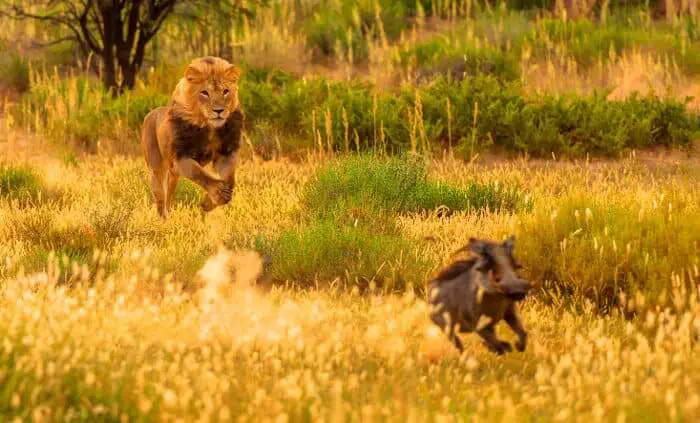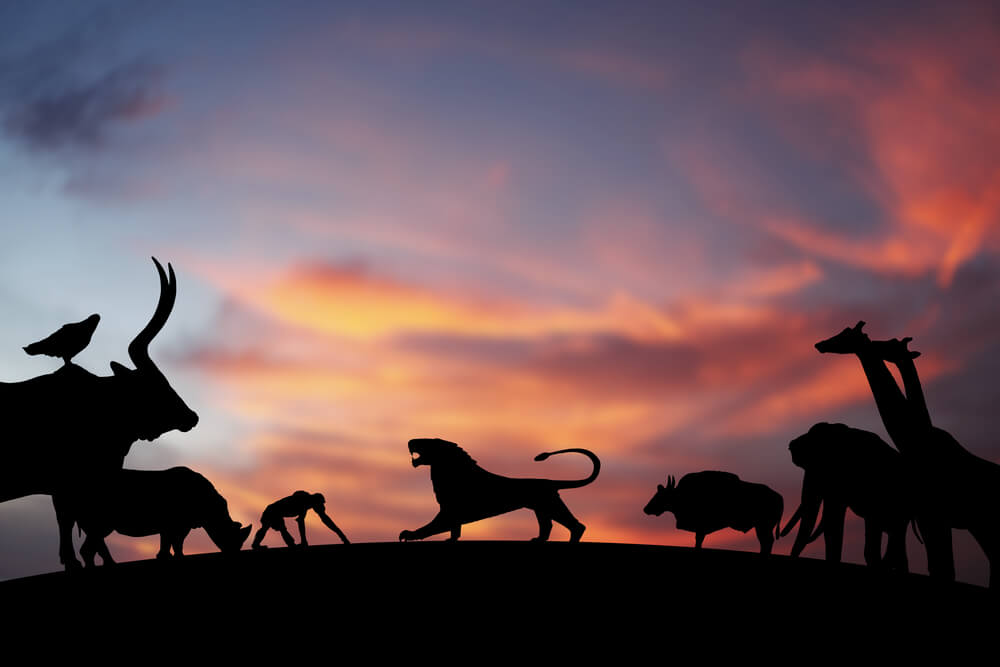The apex predator, or top of the food chain, varies across ecosystems. Examples include lions in savannas, polar bears in the Arctic, and great white sharks in oceans. These predators exert significant influence on their ecosystems due to their position and hunting prowess.
Food Chain and its Components

The food chain is a fundamental concept in ecology, depicting the transfer of energy through a series of organisms. It is a complex web of interactions between different species within an ecosystem. It consists of producers, consumers, and decomposers, all of which play a vital role in maintaining the balance of the ecosystem.
- Producers: Organisms such as plants and algae that produce their own food through photosynthesis.
- Consumers: Animals that obtain energy by consuming other organisms. They are further classified into primary, secondary, and tertiary consumers based on their position in the food chain.
- Decomposers: Organisms like bacteria and fungi that break down organic matter, returning nutrients to the soil.
The Role of Producers, Consumers, and Decomposers in a Food Chain:
- Producers: Convert sunlight into energy through photosynthesis, forming the base of the food chain.
- Consumers: Obtain energy by consuming other organisms. They play vital roles in regulating populations of other species.
- Decomposers: Break down dead organic matter, recycling nutrients back into the ecosystem.
Characteristics of Top Predators
A top predator, also known as an apex predator, occupies the highest level in a food chain or web. These predators have a profound impact on ecosystem dynamics due to their position and feeding habits.
Key Characteristics that Define Top Predators:
- Large Size: Many top predators are large in size, allowing them to hunt effectively and prey on a wide range of organisms.
- Keen Hunting Skills: Top predators often possess specialized adaptations for hunting, such as sharp claws, powerful jaws, or keen senses.
- Low Population Density: Due to their position at the top of the food chain, top predators typically have lower population densities compared to other species.
- Role as Keystone Species: Top predators often act as keystone species, exerting disproportionate influence on ecosystem structure and function.
Examples of Iconic Top Predators from Various Ecosystems:

| Ecosystem | Top Predator |
|---|---|
| African Savanna | Lion |
| Arctic | Polar Bear |
| Ocean | Great White Shark |
| Forest | Tiger |
| Desert | Coyote |
Environmental Factors Affecting Predator-Prey Dynamics
Predator-prey dynamics are influenced by various environmental factors, for example:
- Habitat Loss: Destruction of habitat can disrupt predator-prey relationships and lead to population declines.
- Climate Change: Sinificant change in climate patterns can affect the distribution and abundance of both predators and prey species.
- Invasive Species: Introduction of invasive species can disrupt native ecosystems and alter predator-prey interactions.
Human Impact on Predator Populations and Ecosystems
Human activities have significantly impacted predator populations and ecosystems worldwide:
- Overhunting: Hunting and poaching have led to declines in populations of many top predators, pushing some species to the brink of extinction.
- Habitat Destruction: Deforestation, urbanization, and industrialization have resulted in loss and fragmentation of habitat for many predator species.
- Pollution: Pollution of air, water, and soil can have detrimental effects on predator populations, affecting their health and reproductive success.
The Ultimate Predator: Homo sapiens
Despite the formidable presence of top predators in various ecosystems, one species stands out as the ultimate predator: Homo sapiens. With advanced technology and sophisticated hunting techniques, humans have reshaped landscapes and ecosystems across the globe. However, our actions have also led to the decline of many predator populations and disrupted fragile ecosystems.
Conclusion
Top predators play crucial roles in maintaining the balance of ecosystems, shaping the abundance and distribution of other species. However, human activities pose significant threats to these apex predators and the ecosystems they inhabit. It is imperative to recognize the importance of conserving top predators and their habitats to ensure the health and resilience of our planet’s biodiversity.
References:
https://www.discovermagazine.com/planet-earth/who-is-at-the-top-of-the-food-chain
https://www.nationalgeographic.org/encyclopedia/food-chain/

I’m Christopher Benjamin, a dedicated Animal Nutritionist at Ethos Veterinary Health with a Bachelor of Science in Animal Science from Michigan State University. My lifelong passion for animals led me to establish AnimalsData.Com. Here, I share expert advice, educational resources, and inspiring stories to empower fellow pet lovers worldwide. Join our community as we celebrate the beauty and diversity of our beloved animal companions!
